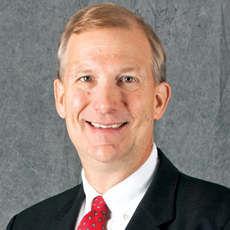
I don’t know what was more shocking this week: A warning that federal regulators might actually double the amount they could trim from nursing home reimbursement rates next year or the way some veteran providers took that news as par for the course.
It was just a few happy weeks ago that the Centers for Medicare & Medicaid Services released the 2022 SNF PPS final rule. Prominently noted was the fact that the feds would be taking more time to figure out what to do about Patient Driven Payment Model rates, and not immediately address what they had called overpayments of 5% or $1.7 billion.
There were shouts of joy and feelings of vindication among the providerdom, for it had raised loud cries that CMS’s calculations were way out of whack and that the agency should make no cuts, at least not without further investigation. And that is what has happened. So far.
Then came Marc Zimmet, president of Zimmet Healthcare Services Group, who explained Wednesday that the delay could simply allow CMS to find more things to cut by this time next year. As much as 10% or 12%. Flawed methodology determining per diem rates would doom any readjustments, Zimmert warned.
To some of the 1,100 providers in the Zimmet conference crowd, it came as no surprise. One regional industry leader said she had already figured cuts could go up to 7% or 8%. This, because CMS will have designated places where it thinks providers are doing too well, such as in nursing services or speech language pathology.
It was said with a resigned shrug.
Then there was the small chain owner who also was not surprised by the prospect that the rug could be pulled from under providers again. He, however, got a little more heated, forecasting that “something” would get cut but with insufficient data.
CMS had PDPM in play for less than six months before the pandemic hit and since has punted on making any changes due to abnormal pandemic operating conditions. The chain owner wondered how much more “normal” conditions — for now, still typified by prodigious amounts of personal protective equipment, access restrictions, extreme infection control methods and depressed census and staffing levels — would have to get to represent PDPM’s true impact.
But life as a long-term care leader is nothing if you don’t feel like a marionette. You’re sure to have someone above pulling strings so your progress and movements are always in check. This, perhaps, was the biggest driver behind providers’ largely nonchalant reaction when Zimmet popped the 10% to 12% possibility.
Were they dismayed or even appalled? Of course. But aghast or surprised? No.
It brings to mind the new couple who moved into the neighborhood and were excited when they heard the neighbors say they wanted to have them for dinner.
Then they learned they had moved into a neighborhood of cannibals.
As nursing home operators know all too well, sometimes a deeper, second look is needed to see whether you’re going to eat, or simply be eaten.
Follow Executive Editor James M. Berklan @JimBerklan.




